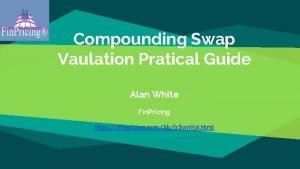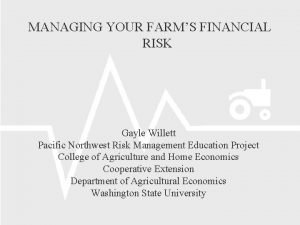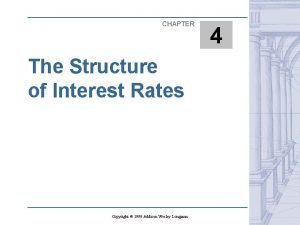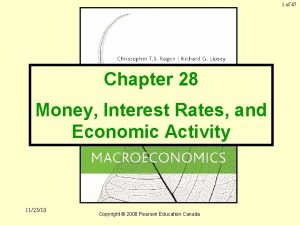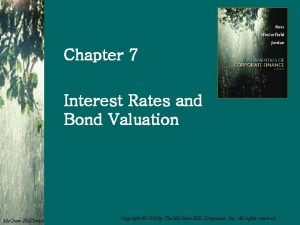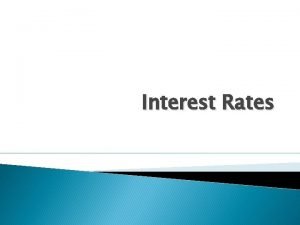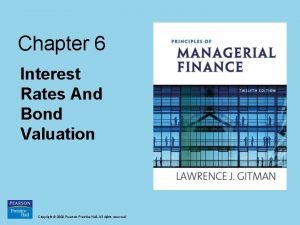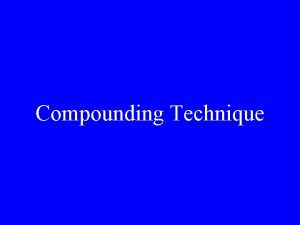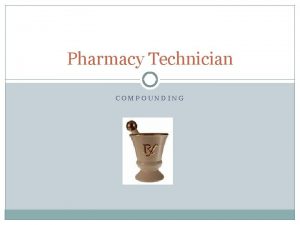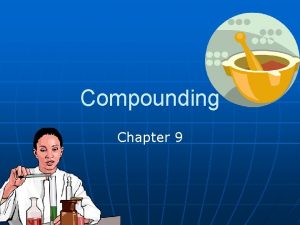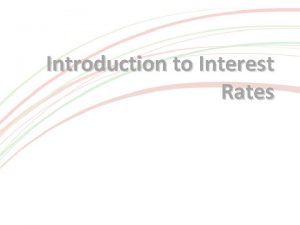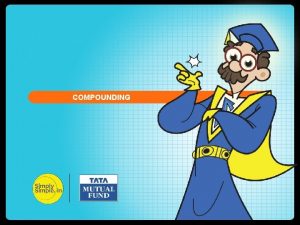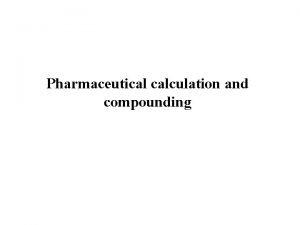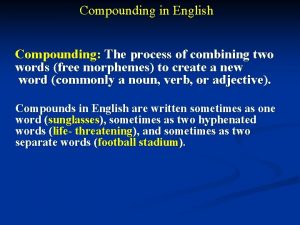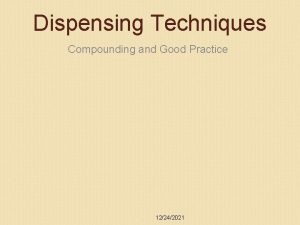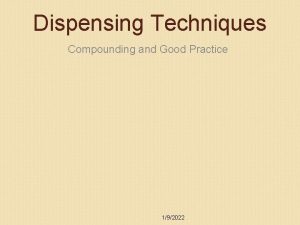Interest Rates Ch 4 041706 Compounding interest Thus












- Slides: 12

Interest Rates (Ch. 4) 04/17/06

Compounding interest • Thus far, we have assumed that interest is compounded (or paid/earned) once during the period. • However, often interest is compounded more frequently than once a period. • This means that interest is earned (but not necessarily paid) more than once during the period. • We examine here what the effect of the frequency of compounding has on interest rates.

Quoting conventions • Annual Percentage Rate (APR): – a. k. a. nominal, stated or quoted rate – Rate required to be disclosed in lending agreements (Truth-in-lending laws) – Does not reflect the actual interest earned/paid APR = periodic interest rate * compounding periods per year (C/Y)

Quoting conventions • Effective Annual Rate (EAR) – – – The annual rate of interest actually paid or earned. Incorporates the effect of compounding The EAR is equal to the annual percentage yield (APY) which is the rate required to be disclosed in savings products (Truth-in-savings laws) where m is the compounding frequency (or C/Y) – For continuously compounded interest,

Employing compounded interest in PV/FV calculations (rules to follow) • For lending (savings) products, assume that the interest rate stated is the APR (APY) unless otherwise specified. • Ensure that the frequency of cash flows and interest rate used is consistent. – If APR is compounded and the compounding frequency (C/Y) is the same as the cash flow frequency, use APR/ (C/Y) for the interest rate.

Employing compounded interest in PV/FV calculations (rules to follow) • Ensure that the frequency of cash flows and interest rate used is consistent. (contd. ) – If cash flows are annual, use EAR regardless of the compounding frequency – For simple (single cash flow) PV/FV problems, use EAR – If you are provided with an interest rate over the same period as the cash flow period, no adjustments need to be made

Nominal and Real Interest Rates • APR and Periodic Rates are nominal rates • Nominal Rates have two components – Real Rate – Expected Inflation Rate • Real Rate is the reward for saving • Expected Inflation is the rising price of a good

Nominal and Real Interest Rates • Fisher Effect – Relationship between real rate, expected inflation, and nominal rate (1+r) = (1+r*) x (1+h) where r is the nominal rate, r* is the real rate, and h is expected inflation - We can get an approximate value for r: r ≈ r* + h

Risk-free Rate and Premiums • Nominal interest rates (of return) associated with a particular investment or asset are based on four components. – Risk-free rate – Default Risk – Maturity – Liquidity

Risk-free Rate and Premiums • Risk-free rate (rf) – a “guaranteed” rate available to investors – 3 -month U. S. Treasury Bill rate • Default Risk – Different Investments have different default risk based on the issuers ability to meet future promised payments – Credit ratings (by Standard and Poors, etc. ) evaluate the default risk of public companies.

Risk-free Rate and Premiums • Maturity Premium – Investors demand more compensation for investing in longer-maturity investments – The term structure of interest rates and yield curve reflects the difference in rates as the borrowing time increases and provides an estimate of the maturity premium • Liquidity Premium – Different investments can be converted back to cash at different speeds and ease

Risk-free Rate and Premiums • Summary of Interest Rates – The nominal interest rate can be summarized as follows: r ≈ rf* + h + dp + mp + lp where dp, mp and lp represent the premiums required by investors for default risk, maturity and liquidity of the investment.
 To be thus is nothing but to be safely thus
To be thus is nothing but to be safely thus Compounding swap
Compounding swap Ratios rates and unit rates
Ratios rates and unit rates Ratios rates and unit rates
Ratios rates and unit rates Equivalent ratios
Equivalent ratios Ratios rates and unit rates
Ratios rates and unit rates Disadvantages of high interest rates
Disadvantages of high interest rates Interest rates
Interest rates Interest rates and price level
Interest rates and price level Chapter 7 interest rates and bond valuation
Chapter 7 interest rates and bond valuation What is real interest rate and nominal interest rate
What is real interest rate and nominal interest rate Quotes
Quotes Chapter 6 interest rates and bond valuation
Chapter 6 interest rates and bond valuation

